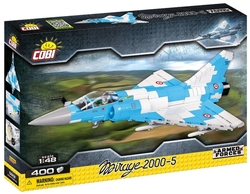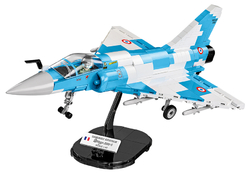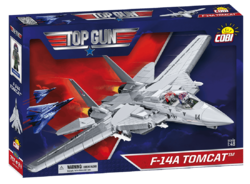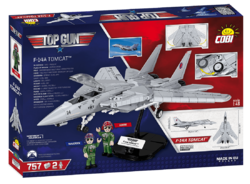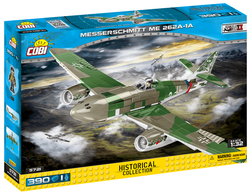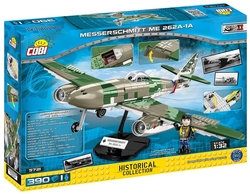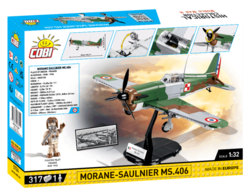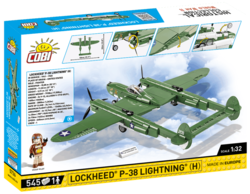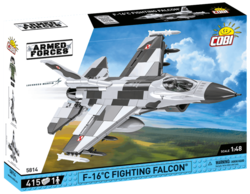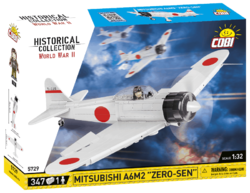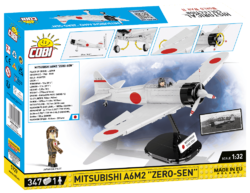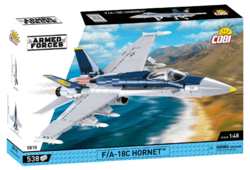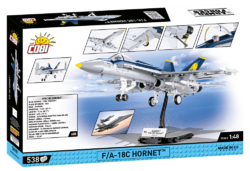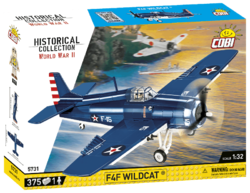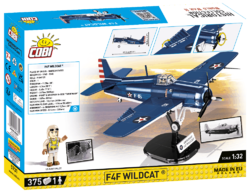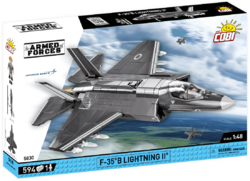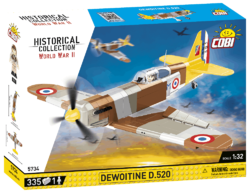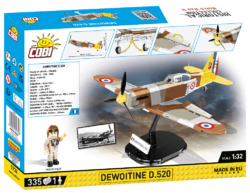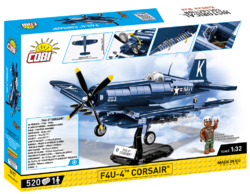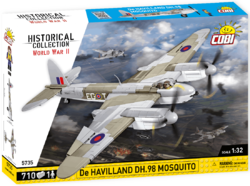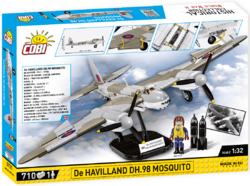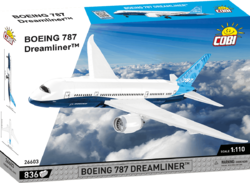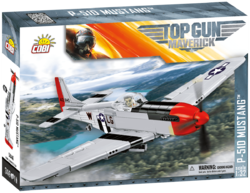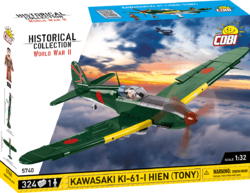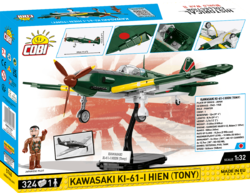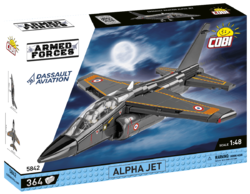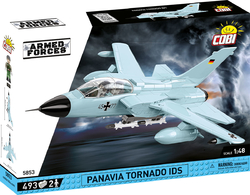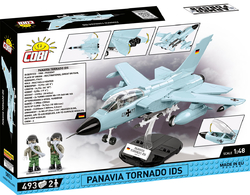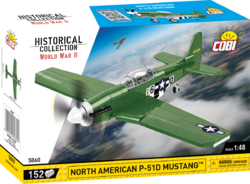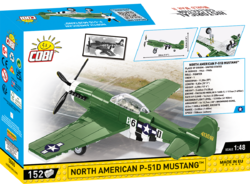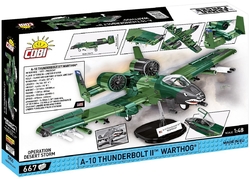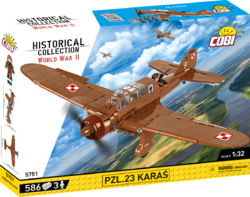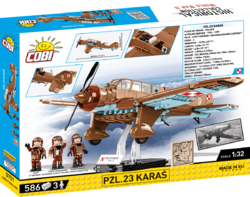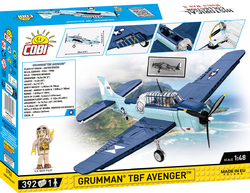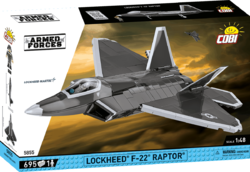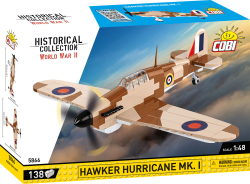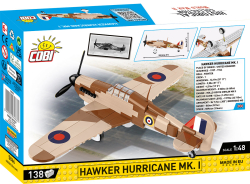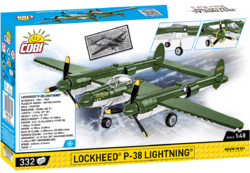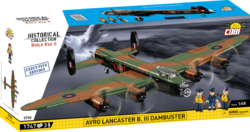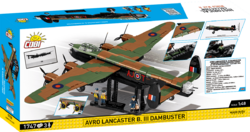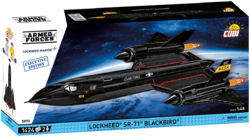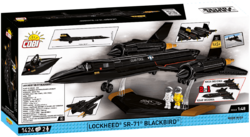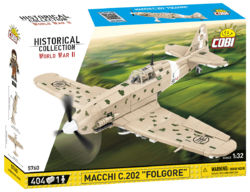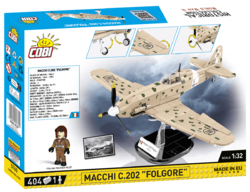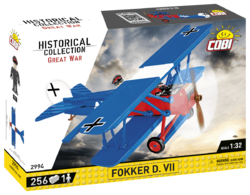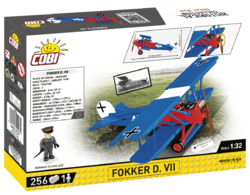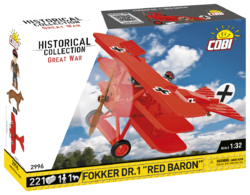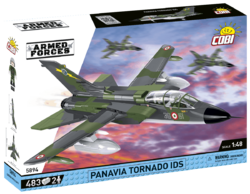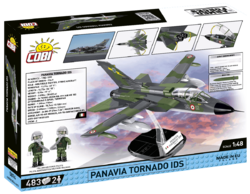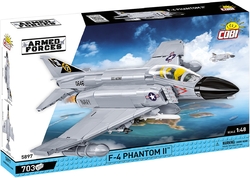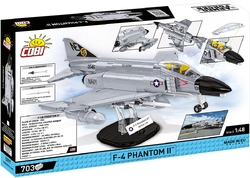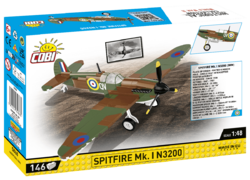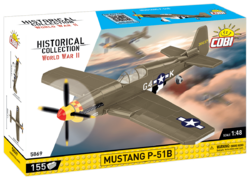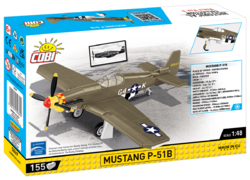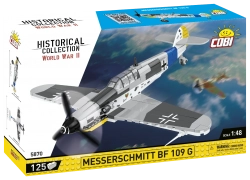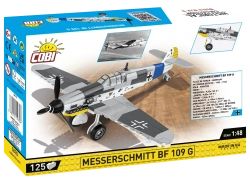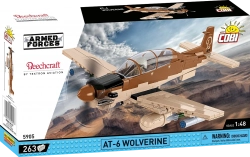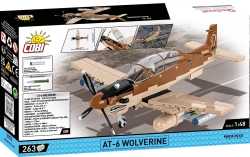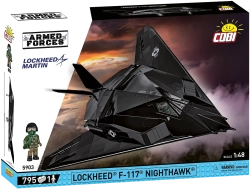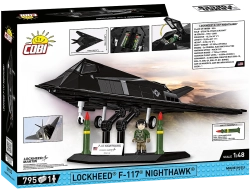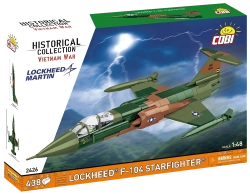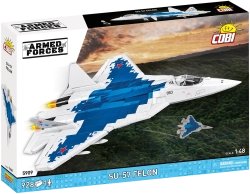A model kit of the American F-5A fighter plane from the period of the Vietnam War in USAF camouflage. The model has adjustable rear control surfaces, removable undercarriage legs and a specially modified figure for seating in the cockpit. An additional fuel tank is suspended under the fuselage. The assembled model can stand on its own chassis or on a stand with a description included in the package. 1:48 scale kits bring the same joy but more shelf space. The model is produced under the official license of Northrop Grumman.
Show more
0 %
(0 Ranking)
749 Kč
pcs
Add to Cart
In stock - ready to ship (3 pcs)
| List Number: | COBI-2425 |
| EAN: | 5902251024253 |
| Warranty: | 24 months |
| Manufacturer: | COBI |
| Loyalty Points: | 5 |
| Price excluding VAT: | 619,14 Kč |
Description
Parametres
Files and Links
Discussion
Reviews

You know that:.png)
- Development of the aircraft began in 1956 as a smaller and cheaper alternative to the F-4 Phantom.
- Since the United States had no need for such an aircraft in the 1960s, the F-5 became a great export item.
- Compact, light, fast, and maneuverable, the aircraft's low acquisition and operating costs attracted the attention of many countries.
- After flight tests in 1959, orders poured in. A total of 36 countries added F-5 fighters to their arsenals.
- The F-5 was actually an excellent aircraft, popular with pilots and ground personnel for its ease of maintenance. In 1970, the F-5 even won an international fighter competition.
- Over time, the machine was upgraded, with various versions being created as a trainer special, a radar reconnaissance special, or machines capable of in-flight refueling for the U.S. Navy.
- The aircraft earned the name Freedom Fighter during the defense of South Vietnam against the Viet Cong.
- Licensed production also took place in Spain, Taiwan, Switzerland and South Korea,
- The aircraft was in production for nearly 30 years, with a total of about 1,400 produced.
Technical parameters:
- dimensions: wingspan 7.9 m, length 14.45 m, height 4.08 m
- propulsion 2x GE J85-GE-13 twin-jet engines, each with a thrust of 15.5 kN
- empty weight 2 594 kg, maximum take-off weight 11 190 kg
- range 3 720 km with overhead tanks
- maximum speed 1,734 km/h
- maximum flight level 15 500 m
- climb rate 146 m/s
- armament 2x Pontiac M39A2 20 mm cannon + 3 200 kg bombs
- crew 1
From the memoirs of American pilot Charles "Charlie" Brown.:
"The F-5A was my first combat aircraft. I was nervous about it, but also excited. It was an amazing plane and I was proud to fly it. I went through many dangerous missions with him in Vietnam, but I always managed to come home safe."
Assembly instructions
| Number of figurines | 0 pcs |
|---|---|
| Version (series) | 02/2024 |
| Dimensions after assembly | 17,5 x 29 x 8,5 cm |
| Scale | 1:48 |
| Box dimensions | 34 x 24 x 6 cm |
| Number of pieces | 352 pcs |
| Package weight | 435 g |
| Recommended age | 6+ |
| Contains luminous blocks | No |
| Material | Plastic |
| Collection | Vietnam War |
| Compatible with other brand of kits | Yes |
Discussion is empty.
There is no review for product yet







































